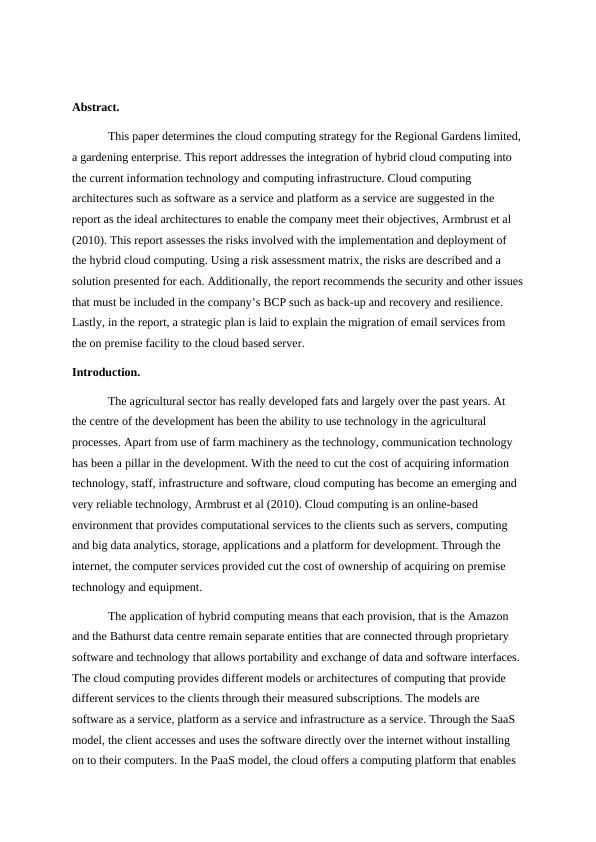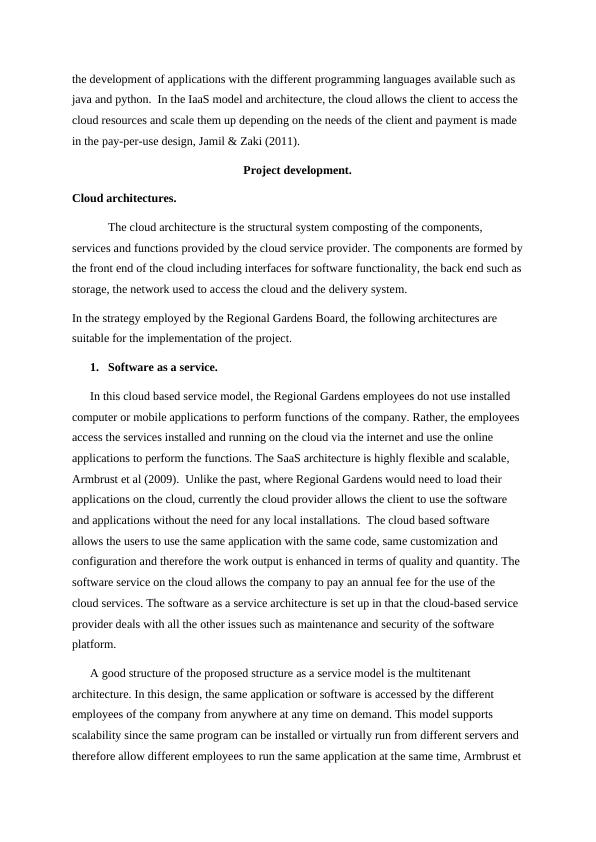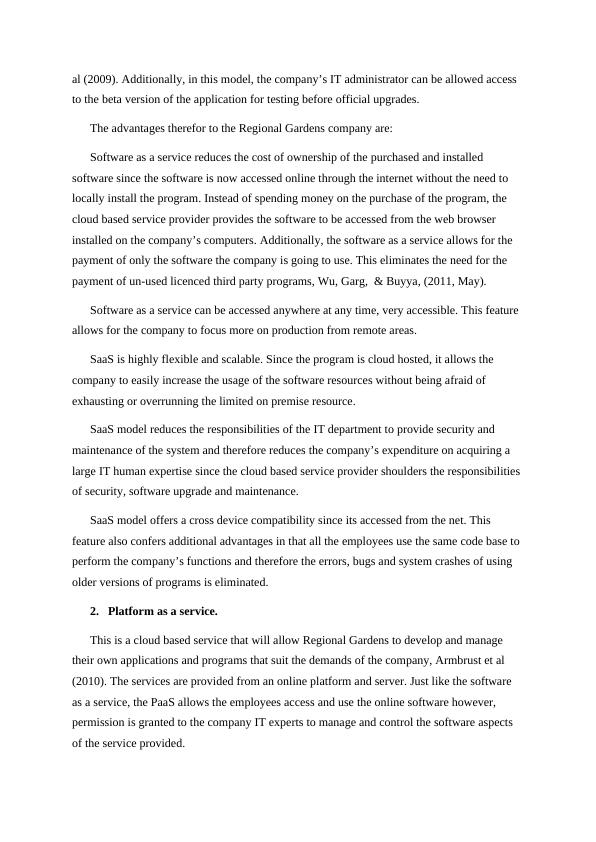Cloud Computing Strategy for Regional Gardens Limited
Regional Gardens Ltd is considering a strategic proposal to update their data storage infrastructure, move their web services to the cloud, and migrate their Line of Business applications.
18 Pages5931 Words187 Views
Added on 2023-06-11
About This Document
This paper determines the cloud computing strategy for the Regional Gardens limited, a gardening enterprise. This report addresses the integration of hybrid cloud computing into the current information technology and computing infrastructure. Cloud computing architectures such as software as a service and platform as a service are suggested in the report as the ideal architectures to enable the company meet their objectives. The report assesses the risks involved with the implementation and deployment of the hybrid cloud computing. Lastly, in the report, a strategic plan is laid to explain the migration of email services from the on premise facility to the cloud based server.
Cloud Computing Strategy for Regional Gardens Limited
Regional Gardens Ltd is considering a strategic proposal to update their data storage infrastructure, move their web services to the cloud, and migrate their Line of Business applications.
Added on 2023-06-11
ShareRelated Documents
End of preview
Want to access all the pages? Upload your documents or become a member.
Cloud Computing: Selection of Cloud Architectures for a Hybrid Cloud
|26
|7544
|430
Cloud Computing: Hybrid Cloud Architecture, Risks, Security Steps, and Mitigation to AWS
|10
|2091
|406
Hybrid Cloud Strategy Assignment
|14
|3015
|73
Cloud Computing in Regional Gardens
|14
|784
|89
Cloud Computing: Web Server Solutions, Office Automation, and Cloud Models
|17
|1370
|21
Benefits of using Cloud Computing : Assignment
|14
|851
|46




